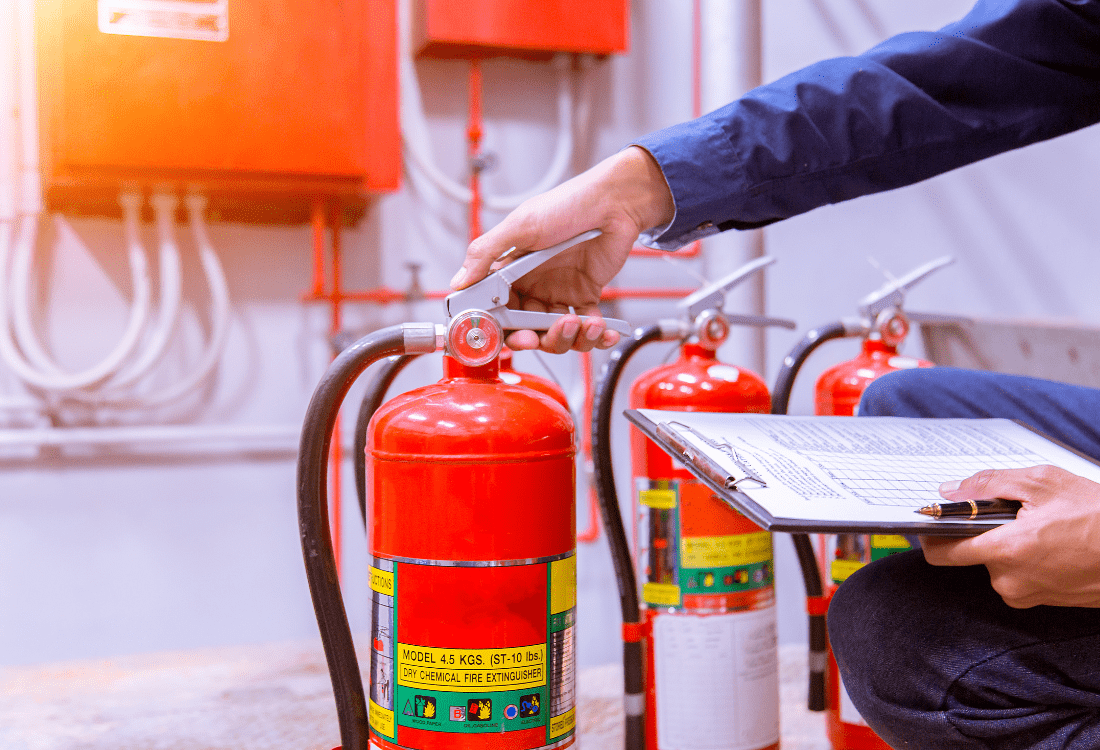
Fire Safety On Construction Sites: 6 Best Practices To Minimise Fire Risk
Fire is a terrifying and pervasive risk on construction sites, and although loss of life is thankfully rare, Home Office statistics reported 1,851 fires on construction sites in England between 2014 and 2019. These fires cause £millions in damage each year and pose a direct risk to public safety, as well as the lives and health of workers.
The risk prompted the HSE to issue new Fire Safety in Construction Guidelines in 2022, as clarification for duty holders under the CDM Regulations 2015.
The guidelines and CDM regulations specify various fire safety roles and responsibilities for principal/main contractors, principal designers, clients, contractors, and workers. A project fire risk assessment should evaluate and mitigate fire risk at every stage, from design and tender to preconstruction, on site construction phase, and practical completion.
In this article, we’ll look at some of the main best practices for principal contractors, which is also useful information for carpentry subcontractors and others with an active role in managing site safety.
1. Legal Framework For Fire Safety
Construction fire safety is tightly bound up with compliance with legal requirements. The main legislation governing fire safety is the Regulatory Reform (Fire Safety) Order 2005, under which principal contractors are responsible for taking the precautions necessary to minimise fire risk, and create a safe working environment for subcontractors and workers.
The Construction Design & Management (CDM) Regulations 2015 also obliges the main contractor to put suitable arrangements in place for managing health and safety risks at all stages of the design project, including those related to fire safety.
2. Site Fire Safety Plan
Having a well-defined site Fire Safety Plan is essential for any building project. Each plan should be synchronised with the risks of the particular site, outlining the measures that will be taken to prevent fires, including regular inspections of potential fire risks such as plant and electrical equipment, and storage zones for flammable materials.
The plan should also put emergency procedures in place, including clear evacuation routes and designated assembly points. The fire safety plan should be reviewed at regular intervals throughout the project, or as circumstances change, to take new risks into account.
3. Communication And Training
Having a nicely written fire safety strategy and plan is one thing, your workers knowing what to do if a fire takes place is another! Effective communication and training are, therefore, the main keys to safety on construction sites. It is extremely important to maintain clear communication channels between your management team and workers and subcontractors regarding your fire safety procedures and systems.
Health and safety training for new workers and contractors, with refresher training at set intervals, is the best way to keep fire hazard awareness at front of mind. You should also establish a straightforward reporting system for workers to report potential fire risks and sound the alarm.
4. Creating A Fire Safe Construction Site
The main role of fire safety precautions is to spot fires as quickly as possible, and then to get people away from danger before injuries take place. However, prevention is always better than cure, and as a main contractor or site worker, there are several steps you can take to create a more fire safe site, for example.
- Keep working areas clean and tidy to minimise the risk of fires caused by debris and waste materials. This will also slow down the spread of fire.
- Only smoke in designated smoking areas away from potential fire hazards – on many sites, smoking is banned completely.
- Regularly check plant, generators, vehicles, and electrical equipment – including temporary lighting – for faulty wiring or damage. This includes carrying out regular Portable Appliance Testing (PAT testing) and ensuring equipment is labelled to show when testing took place.
- Maintain safe and secure storage for flammable materials and fuel.
- Establish a fire detection and smoke detection network, linked to an audible alarm network, as well as alerts to designated duty holders and fire officers, and the Fire Brigade.
5. Fire Safety Alarms And Evacuation Procedures
If a fire takes place, having an effective warning and evacuation procedure can save lives and reduce damage. Clear written procedures should include instructions on how a worker should raise the alarm in case of fire, how people should evacuate the site, where to congregate, and how to contact emergency services. Being clear about what to do can save precious minutes and avoid confusion in an emergency. Regular fire drills can familiarise your workers with these evacuation procedures and highlight any areas for improvement.
6. Fire Safety Precautions For Plant, Vehicles, And Machinery
The heavy plant, machinery, and vehicles used on construction sites pose a fire safety risk if not managed efficiently. Fires can be caused by faulty or overheating machinery, accidents between vehicles, or collisions with fuels or flammable liquid storage containers. The lithium-ion batteries used in sustainable plant, and their recharging infrastructure, are also a potent fire hazard. A fire safety plan should include strict fire precautions for these items, including:
- Regular or preventative maintenance checks to keep plant and machinery in good working condition.
- Plant sensors to quickly detect overheating and either automatically shut the plant down or alert a site supervisor.
- Storage of hazardous materials, lithium-ion batteries, chemicals, and fuel away from access routes and unloading/loading points to avoid vehicle collisions.
- Training for plant operators on how to spot fire safety hazards and mitigate risk.
Next Steps
To find out more about site fire safety and how you can reduce your risk level, please get in touch with one of our team today by clicking here.
Image Source: Canva
Click on the categories below to find out more about:

Connect with Us
Share this Page
More Posts
Recent Posts
- Breathe Easy, Work Safe: The RPE Every Site Worker Needs
- From Site to Strategy: Simon Mead Promoted to Associate Director at SC4
- SC4 named Cala Contractor of the Month, October 2025
- Why is Neurodiversity so important in Construction?
- Our Favourite Carpentry Project Of 2024: Cromwell Court, Old Basing
- Case Study: Timber Frame Installation in Netley Grange, Southampton
